In 1973, Daimler-Benz and Steyr-Daimler-Puch signed an agreement to develop a light off-road vehicle for private use. At the time, this was a shot in the dark, as there was little to suggest the market was ready for such a thing.
By the end of the decade, the first Geländewagen (‘Go-anywhere car’) had been presented to the public, kickstarting 41 years of boxy utilitarian history.
Mercedes G-Class, this is your life.
Climb every mountain, ford every stream
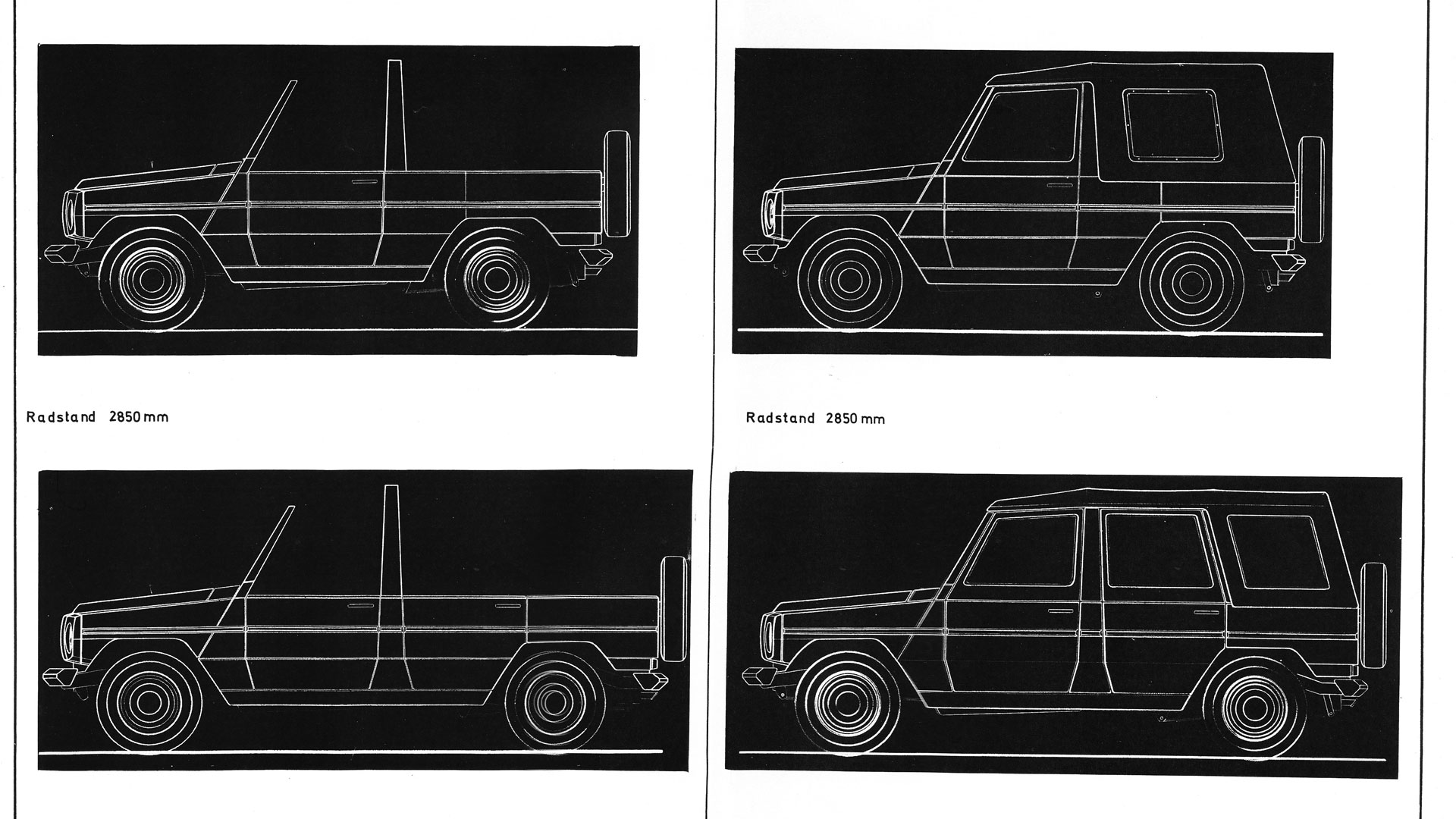
Back in the mid to late 1970s, there was little to suggest that the G-Wagen project had legs. But Mercedes wasn’t prepared to lose focus on the design, insisting that it had to meet the demands of industrial, commercial and military use. Not an off-roader for off-road’s sake, but a go-anywhere 4×4 that was as at home on tarmac as it was on the rough stuff. These drawings from 1974 show the direction the teams were taking. This was a proper ‘Austrian army knife’ affair – a vehicle ready for any challenge.
Army Dreamers

By 1975, the market forecasts were suggesting that such a vehicle could prove very popular, especially for civilian use. In the meantime, the G-Wagen was catching the eye of the armed forces. The Shah of Iran placed an order for 20,000 units, but the contract was cancelled before production got underway. Some of the slack was picked up by Germany’s regional police forces and customs officials, while the Argentinean, Norwegian and Swiss armies also got involved. However, the number of civilian G-Wagens sold far outnumbers the military-spec models. This is a long-wheelbase 280 GE station wagon, pictured in 1979.
Aachen Baby
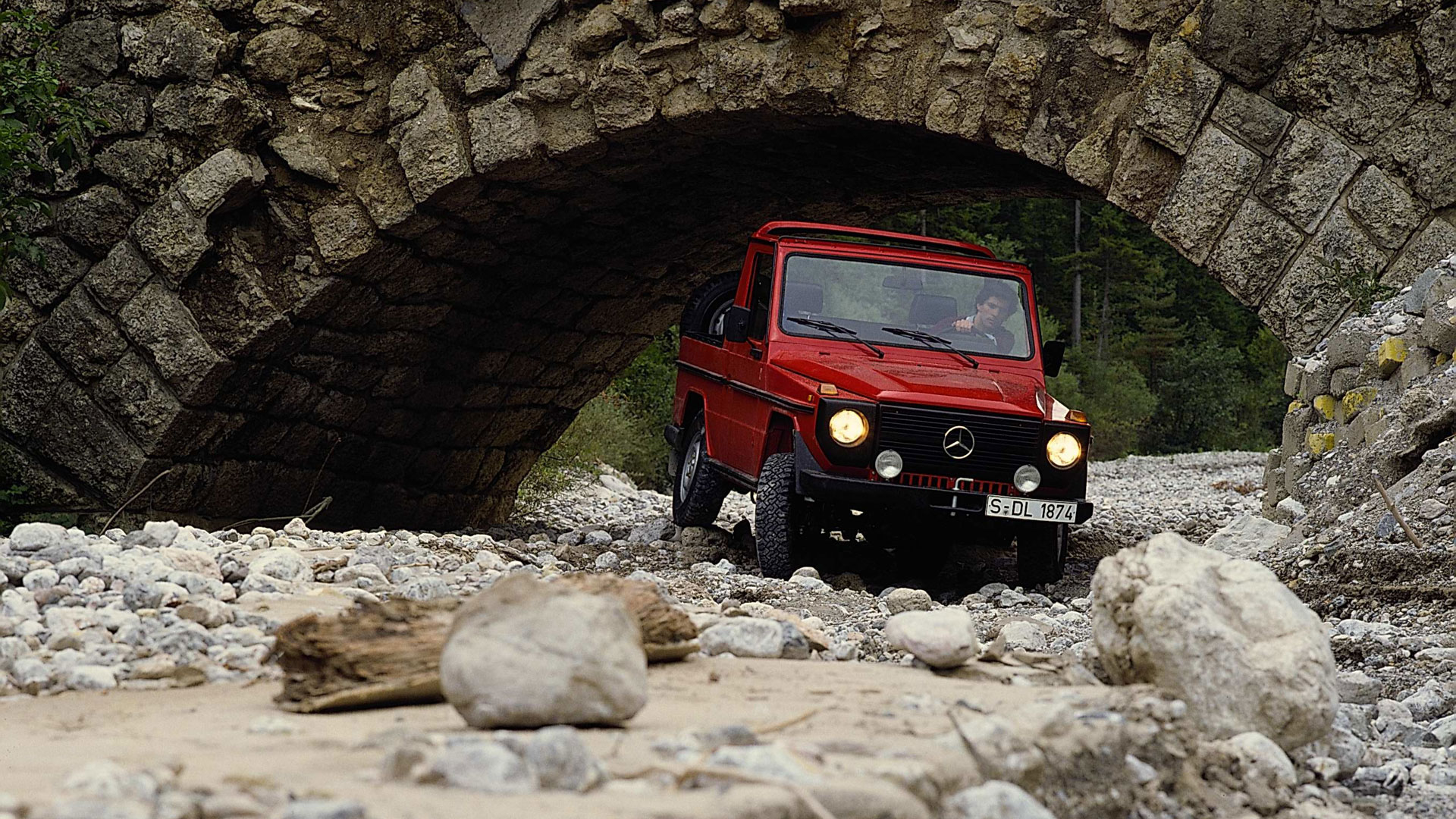
Over the course of five years, the engineers from Steyr-Daimler-Punch and Mercedes-Benz subjected the G-Wagen to the kind of challenges that would send today’s crossovers running back to mummy. From the vast coalfields between Cologne and Aachen to the tracks of the Atlas mountains, no boulder was left unturned in the pursuit of supreme toughness. Corrosion tests were conducted on a salt lake in the Sahara, while hot and cold weather tests were carried out in North Africa and the Arctic Circle respectively. Meanwhile, work was getting underway on a new 40,000 square-metre plant in Austria.
You Know my Name
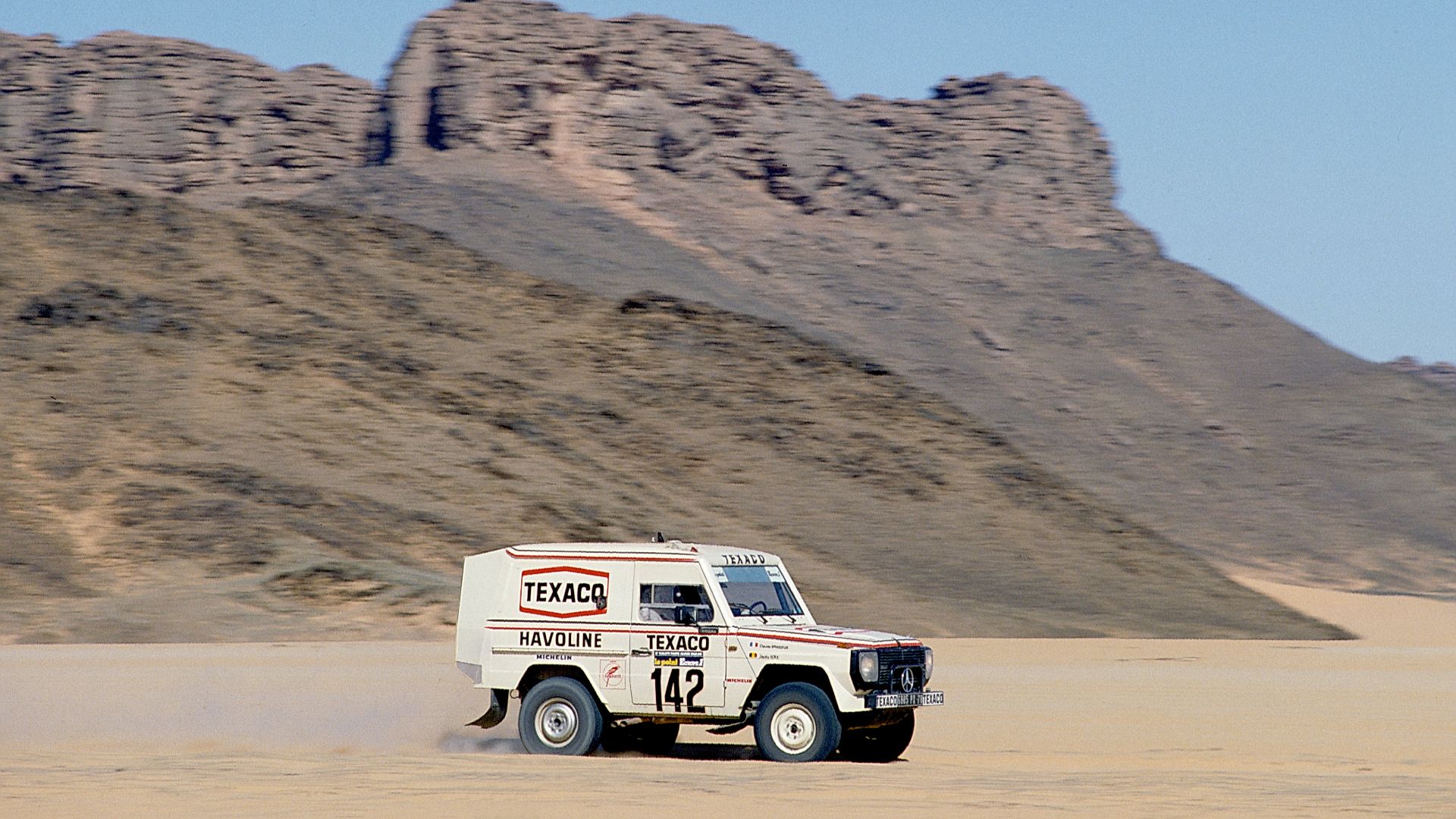
Interestingly, in Austria, Switzerland and the Comecon countries, the G-Wagen wore a Puch badge, while in other countries it displayed the Mercedes three-pointed star. The G-Wagen name was dropped in 1998, the G-Class designation seeing the 4×4 falling into line with the rest of the Mercedes range. It is only since 2000 that the G-Class has been marketed under the Mercedes banner worldwide. The ‘Go-anywhere car’ continued to evolve: an automatic transmission and air conditioning arrived in 1981, while an increasing number of optional extras hinted at the G-Wagen’s future direction.
Pope of Peace

Mercedes-Benz has been building Popemobiles since 1930, when Pope Pius XI received a Nürburg 460 as a present. In 1980, it developed the first Popemobile with a transparent superstructure based on an off-roader. The 230 G from the 460 model series featured a plexiglass dome with automatic climate control.
The Boys of Summer

Later, the Head of the Catholic Church requested an open car for use in fine weather. Mercedes-Benz duly obliged, equipping a 463 model series G 500 with a folding windscreen and hand-rails. Naturally, it was painted in Vatican mystic white. But the Pope wasn’t the only figure of authority to fall for the charms of the G-Wagen…
Sound of da Police

It was, for example, the perfect vehicle for pursuing criminals across the coalfields between Aachen and Cologne or picking up the trail of a hot lead in the Sahara.
Doctor, Doctor
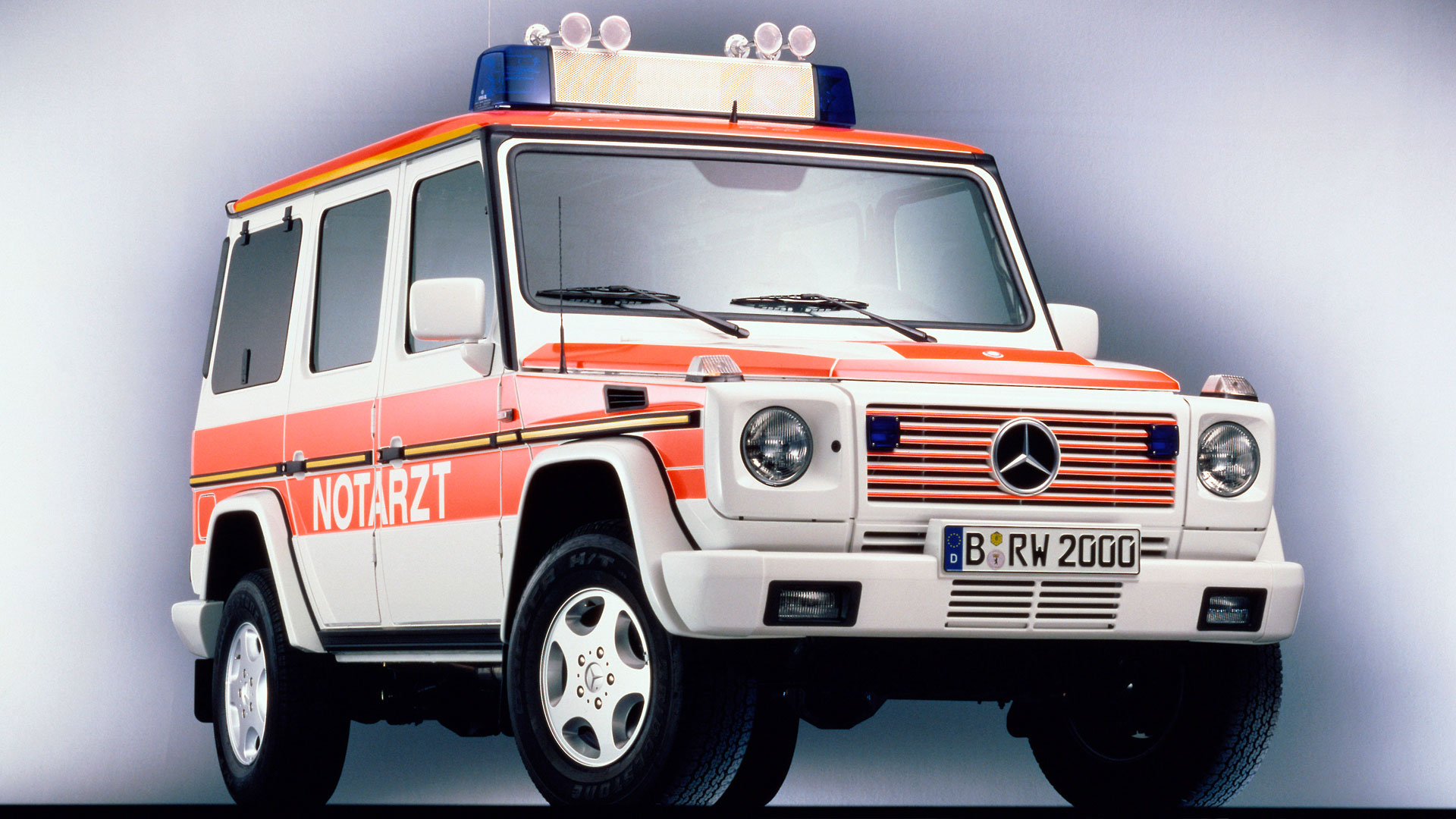
Or, let’s say you slipped and broke your ankle when hiking between Italy and Switzerland. It’s good to know that help would arrive in the form of a Saint Bernard dog and a G-Wagen.
Truck Yeah

Today, you might associate the modern G-Class with Premier League footballers and wealthy sheikhs, but it was designed with more utilitarian tasks in mind. A chassis with cab was available from 1987, while it’s worth noting that the G-Wagen only became the responsibility of the Mercedes-Benz passenger car division from the early 90s. Beforehand, it was part of the commercial vehicle division.
Fire and Desire

The G-Wagen’s peerless off-road ability made it a hit with firefighters and forest rangers. Faced with a forest fire, few vehicles inspire as much confidence as the go-anywhere Merc. Incidentally, when What Car? tested a 280 GE in 1983, about a year after the G-Wagen arrived in the UK, it concluded that it was ‘an impressive all-rounder, on and off road,’ and technically superior to the Range Rover. Only the price let it down.
Santa Baby

If it’s good enough for Santa Claus… Wait, what?
Design for Life

The designers initially chose to make the interior simple but functional. Note the painted metal surfaces, two-spoke steering wheel and the utterly conventional instrumental panel. But notice how – motoring journalism cliché alert – everything falls nicely to hand, while the passenger has quick access to a grab handle, fire extinguisher and first aid kit, should things go awry at the German coalfield.
The Kick Inside
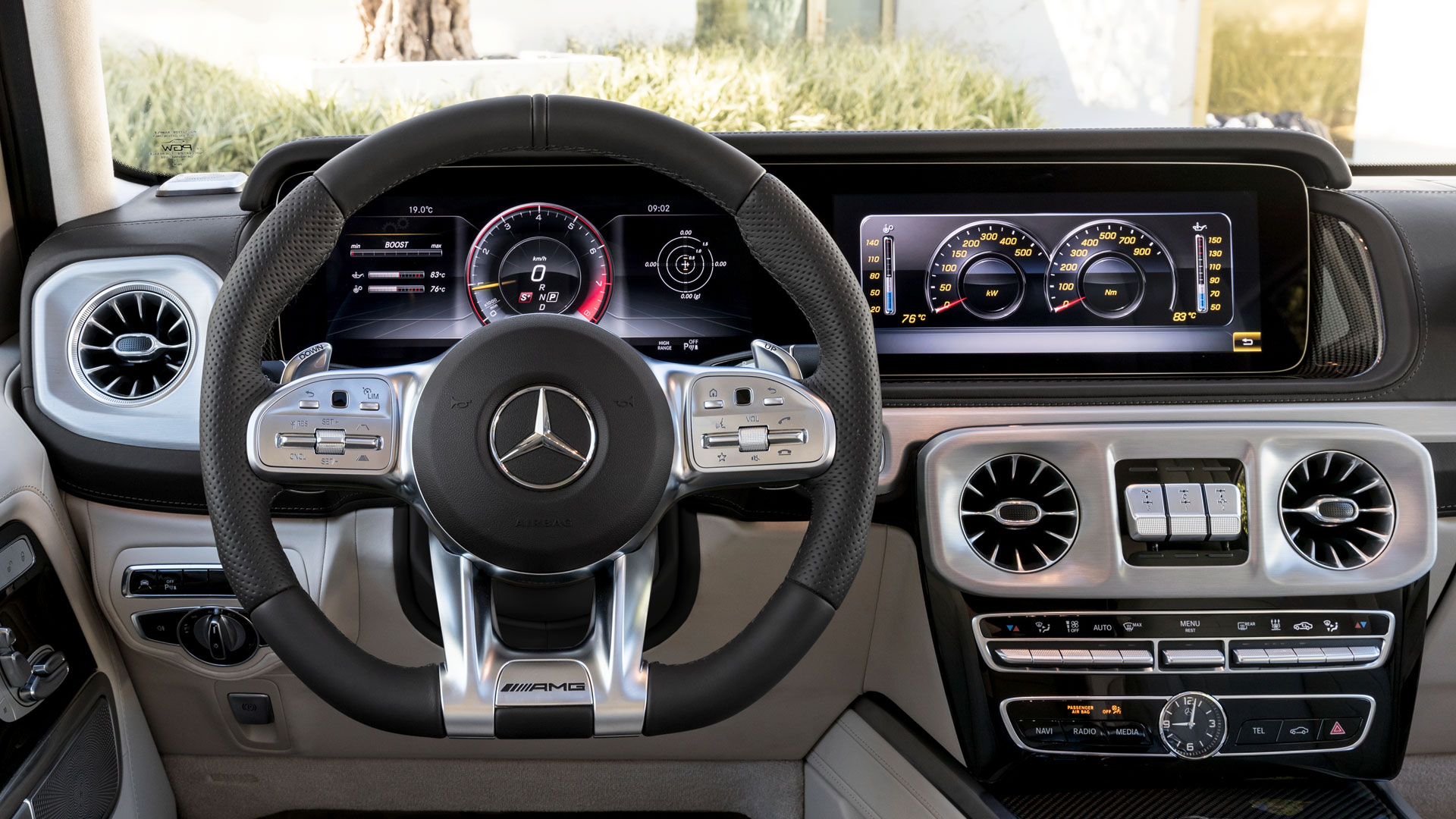
Now compare and contrast the cabin of old with the dashboard found in the very latest Mercedes-AMG G 63. Macchiato beige, baby. Yeah.
Parisienne Walkways
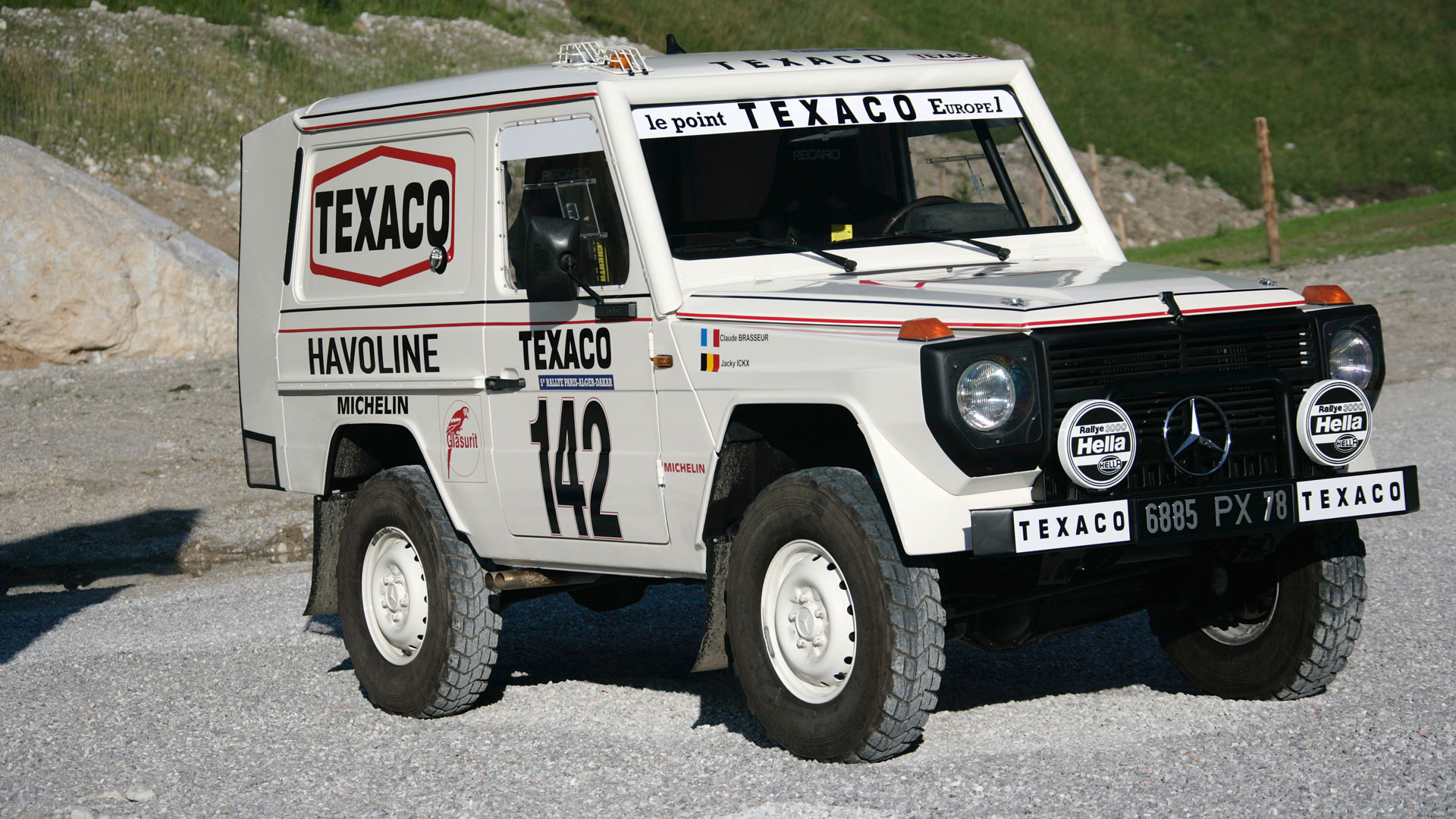
But we’re not quite ready to explore the modern G-Class. Instead, cast your mind back to 1983, when Jackie Ickx and Claude Brasseur won the Paris-Algiers-Dakar Rally in a 280 GE. This followed two highly competitive entries in 1981 and 1982. Thanks to the use of aluminium components, the 280 GE weighed less than the production G-Wagen, while engine output was increased to 220hp.
Going Underground
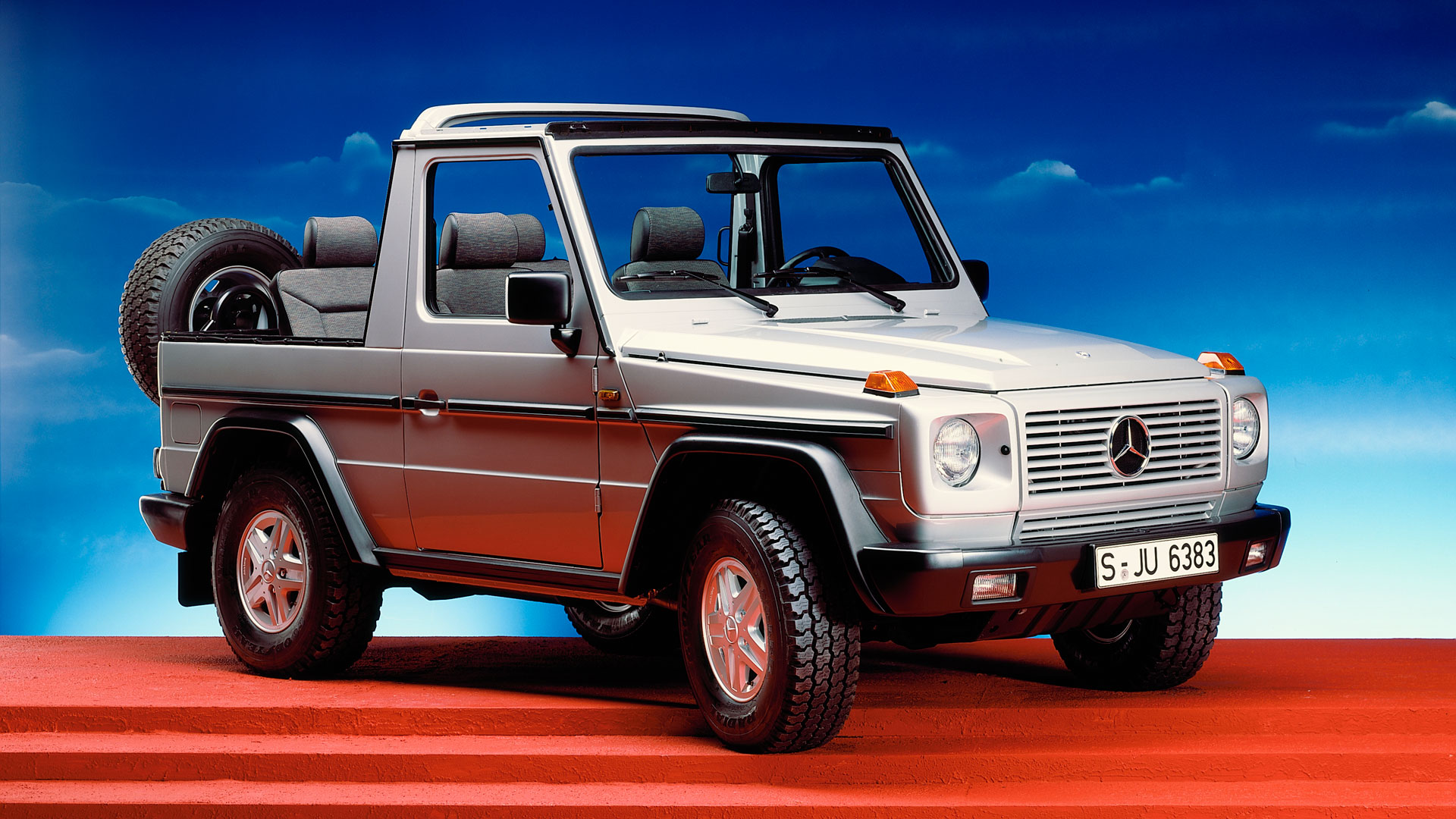
The G-Wagen continued to evolve. A folding soft-top version was introduced in 1985, while a special version for underground work was launched in 1986. Also that year, the 50,000th G-Wagen rolled out of the factory in Graz, Austria. In 1987, Mercedes began drawing up plans for a more comfortably appointed model, culminating in the launch of the 463 model series in 1989. This picture shows a 463 Cabriolet in 1989.
Three Degrees

Twenty years ago, we were beginning to see signs of the G-Wagen’s new market positioning, aping that of the Range Rover’s development plan. This photo from 1997 shows three body versions of the 463: Cabriolet, short-wheelbase Station Wagon and long-wheelbase Station Wagon. A more premium look and feel.
Film Star

Thanks to its chiselled good looks and robust character, the G-Wagen has appeared in many movies. Mercedes-Benz supplied 14 different models for A Good Day to Die Hard, including a G-Class.
Walk the Dinosaur

In 1997, the M-Class made its first official appearance in The Lost World: Jurassic Park. Eighteen years later, Mercedes supplied an entire fleet of vehicles for Jurassic World, including a G 63 AMG 6×6, but more on this model in a moment.
To the Moon and Back

This is a very special G-Wagen. In 2014, it completed a journey of just under 900,000 kilometres (559,000 miles), having visited 215 countries in 26 years. Gunther and Christine Holtorf set off in 1988, visiting deserts, jungles and the frozen landscapes of the Arctic. It’s just as well Mercedes-Benz put the G-Wagen through a punishing development schedule.
Poles Apart

In 2016, extreme adventurer Mike Horn set off from New York on the ‘Pole2Pole’ expedition. Mike Horn was the first person to navigate the entire length of the Amazon River solo and unsupported, to walk the North Pole during the dark season, and to circumnavigate the globe at the equator without motorised transport. Face it, with a CV like this, Mr Horn wasn’t going to rely on a weedy crossover for his Pole dancing expedition.
G-funk

Today, the G-Class is as much about performance and luxury as it is about expeditions and hard work. The range-topping G 500 was introduced in 1998. Its V8 engine developed 296hp and it set the tone for two decades of go-faster G-Class models. A year later, Mercedes launched a limited edition G 500 Classic to mark the vehicle’s 20th anniversary.
Superstylin’

The G 500 laid the foundations for the G55 AMG – the most powerful G-Class to date when launched. Unveiled in 1999, the first version developed 354hp, but this was increased to 476hp when the supercharged V8 arrived in 2004. Three years later, the G 55 AMG hit 500hp.
Different Class

All of a sudden, the G-Class looked like an entirely different proposition to ‘Go-anywhere car’ developed in the 1970s. The workmanlike everyman vehicles were still offered, but the launch of the G 63 AMG in 2012 felt like a line in the sand. Its AMG 5.5-litre V8 twin-turbo engine developed 544hp, giving it a 0-62mph time of 5.4 seconds and an electronically limited top speed of 130mph.
Power and Glory

But why have a V8 G-Class when you can have a V12? The G 65 AMG was powered by an AMG 6.0-litre V12 twin-turbo engine developing 612hp and 1,000Nm of torque – a record in the off-road segment. It didn’t matter that neither of these cars had the chassis to match the outrageous power, we were just pleased that they existed.
Emergency on Planet Earth

‘Is it possible that the Mercedes-Benz G-Class will still be around in 2025?’ asked Mercedes-Benz in 2012. Seven years on, the answer to that question is almost certainly yes, but it’s unlikely to look like this. The Ener-G-Force concept was a design study for a future law enforcement vehicle, featuring a safe cocoon for its occupants, emergency lights integrated into the roof and gigantic wheels.
Grand Designs

In 2005, as the 185,000th G-Class rolled off the line in Graz, Mercedes-Benz announced plans to keep the 4×4 in production for the foreseeable future. To keep it relevant for the modern age, the engineers looked at everything from pedestrian safety to emissions. Meanwhile, in 2006, Mercedes launched the Grand Edition. Finished in a metallic grey colour, the Grand Edition also featured a host of cosmetic upgrades, including illuminated door sills.
Guardian Angel
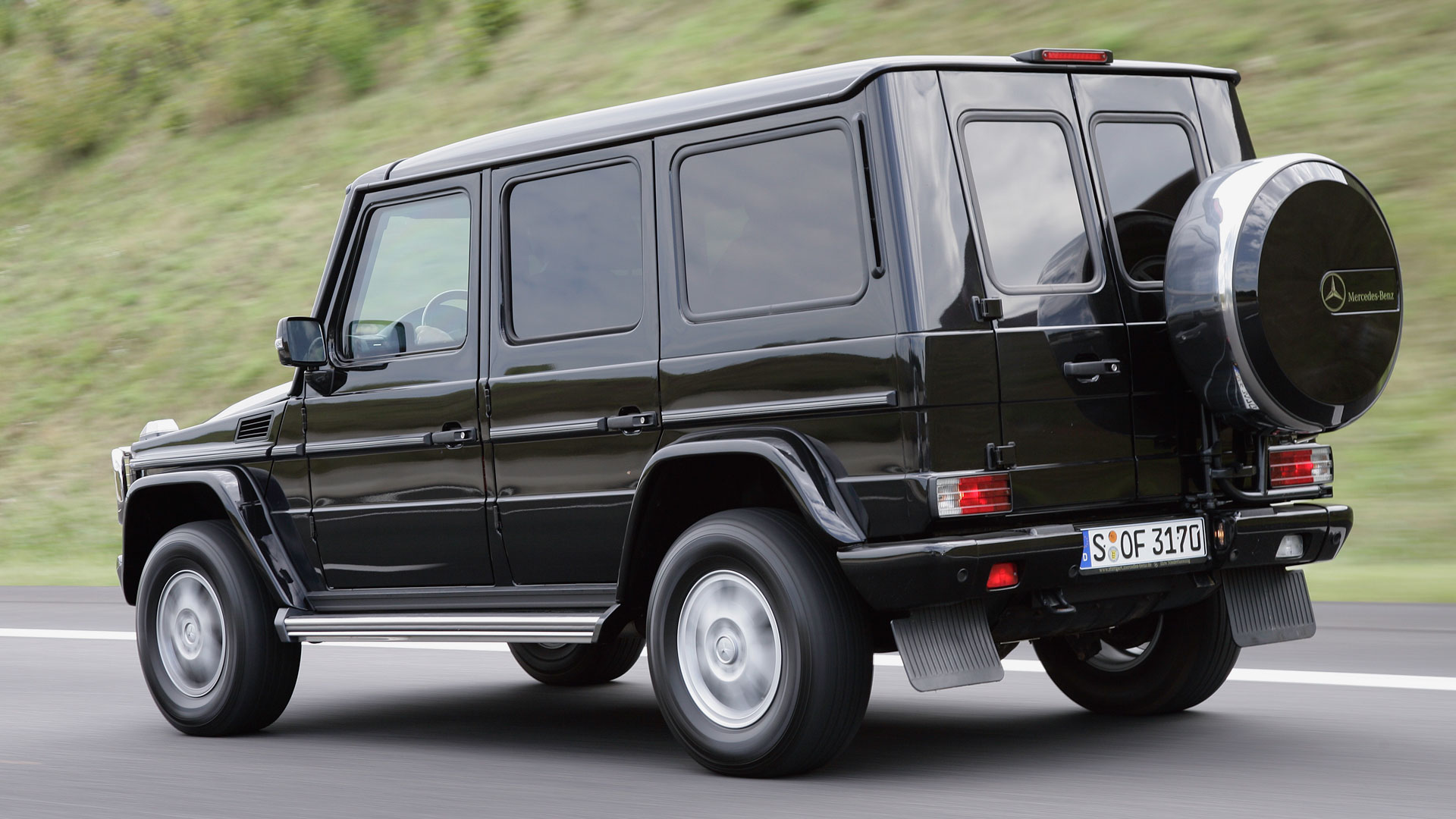
Mercedes-Benz launched a range of special protection vehicles in 1999, with the G-Guard offered alongside the S-Guard and E-Guard. To avoid unwanted attention, these Guard vehicles look like regular production models, but the armoured features are integrated into the bodyshell during the vehicle assembly. Everything is considered in the name of protection, including strengthening the door looks and adding ‘transition areas’ between the metal and glass, designed to send a bullet ‘into a kind of labyrinth’.
Father and Son

To mark the 30th anniversary of the G-Class, Mercedes launched the Edition30 and Edition30.PUR models. The long-wheelbase Edition30.PUR paid homage to the first-generation G-Wagen, with the 461 series G 280 CDI-based model optimised for off-road adventures. The Edition30 was based on the 463 series G 500 Station Wagon and offered more in the way of luxuries. We just like it for this touching ‘father and son’ picture.
Glitter and Gold

But for all the talk of expeditions, intrepid explorers and go-anywhere spirit, by the turn of the current decade, there’s little doubt that the G-Glass was feeling as much at home on the red carpet as it was on the coalfields of Germany. In 2011, Mercedes-Benz sponsored the Goldene Kamera film awards in Germany, which was the perfect excuse to create a gold-wrapped G-Class. It’s a strong look.
Going Back to My Roots

The decision to keep the G-Class in production was looking like a good one. Between 2001 and 2009, sales rose by more than 50 percent, which encouraged the firm to roll out a comprehensive facelift in 2012. The new car featured a range of cosmetic, interior, safety and tech upgrades. Not that the G-Class had forgotten its roots. The Professional model targeted explorers, rescuers and those who preferred their G to have a little more authenticity.
A Land Down Under

We’re not sure where the G 63 AMG 6×6 would rank on the authenticity-o-meter, but it was certainly one of the most memorable cars of the past decade. Conceived and engineered for the Australian army, the extreme off-roader was produced in limited numbers and powered by an AMG V8 twin-turbocharged engine producing 544hp. The only thing as large as the 6×6 was the price. A cool £370,000 to you, sir.
Starship Trooper

To coincide with the vehicle’s 35th anniversary, Mercedes-Benz launched the Edition 35 special edition. Available for the G 350 BlueTec and G 500 models, upgrades included black 18-inch alloys, black metallic cosmetic upgrades, silver or white paint finishes, a choice of leather interiors and what Mercedes called a ‘hallmark feelgood atmosphere on-board’. Also in 2014, the 230,000th G-Class left the factory in Graz. What a trooper.
G Squared

What started life as a Geneva concept car became a reality in 2015 when Mercedes confirmed production of the G 500 4×4². Encouraged by the success of the G 63 AMG 6×6 – the firm had received more than 100 orders by the summer of 2015 – Mercedes pressed ahead with production of the three-tonne 4×4². It adopted the portal axles of the 6×6, which alone gave it about 90mm more ground clearance than the standard G-Class. With 22-inch rims, 325/55 tyres and adjustable shocks, overall ground clearance increased to 450mm, with a fording depth of a metre.
Make Mine a 99

From the sublime to the… what on earth is that? In February 2017, the motoring world stood slack-jawed as the Mercedes-Maybach G 650 Landaulet broke cover. With a wheelbase stretched by 578mm and portal axles from the G 500 4×4², the segment-busting vehicle featured a rear compartment spanned by a folding soft-top and fitted with fully reclining seats. Power was sourced from a 612hp V12, with production limited to 99 units.
Super Graz

It seemed like there was no stopping the go-anywhere G-Class. In July 2017, Mercedes announced that the 300,000th car had left the factory in Austria. “The G-Class has been produced by Magna Steyr in Graz, Austria, on behalf of Mercedes-Benz since 1979. Today our off-road icon is more successful than ever. The production of 300,000 G-Class models is an impressive milestone. The team which has contributed substantially to this success includes employees who have been part of the story of the G-Class for 38 years. We have enjoyed decades of successful cooperation with Magna Steyr in the production of the G-Class,” explained Dr Gunnar Güthenke, head of the off-road product group at Mercedes-Benz.
Winds of Change

But the writing was on the wall for the original G-Class. The winds of change were about to sweep through the Austrian factory, with a new model set to replace the original. At the 2018 premiere in Detroit, Mercedes unveiled a ‘Stronger Than Time’ installation, with a 280 GE cast in amber. It was as though the G-Wagen had been trapped in the middle, like an insect locked by amber millions of years ago.
River Deep, Mountain High

We’re not sure if the new G-Class visited any German coalfields, but this photo was taken during testing on the Schöckl mountain near Graz. The 5.6km test track includes gradients of up to 60 percent and inclinations of 40 percent, with the G-Class completing 2,000km on the course. The goal: to make the G-Class even better off-road.
All Things Must Pass (except door handles)
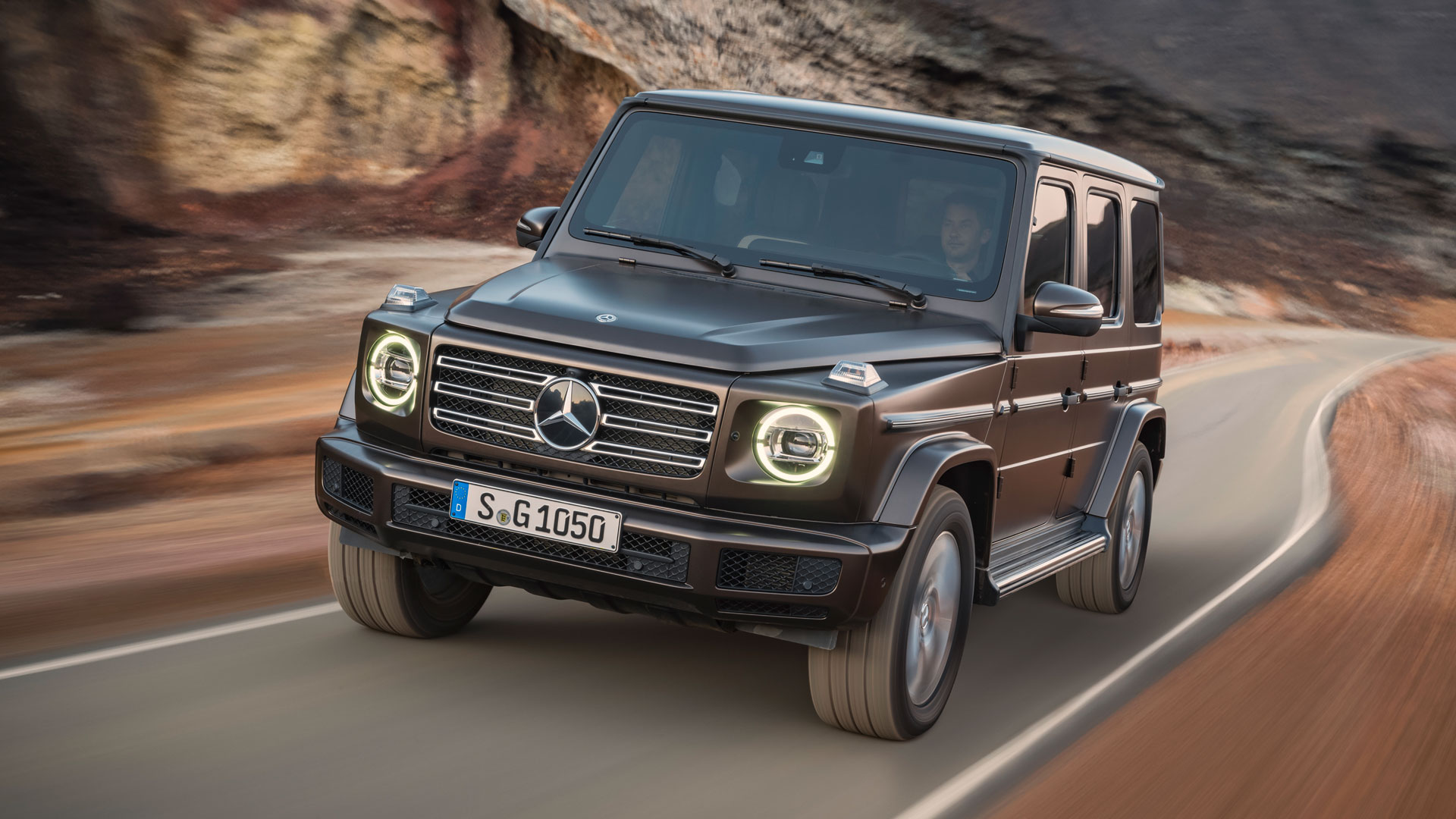
For the latest model, the designers and engineers paid homage to the outgoing car but managed to create a G-Class that’s almost entirely new. However, some things remain. The doors are designed to shut with the characteristic closing sound, while the door handles, washer jets and spare wheel cover are carried over from the original. The more you look at it, the more you notice how much has changed.
Bigger, Better, Faster, More!
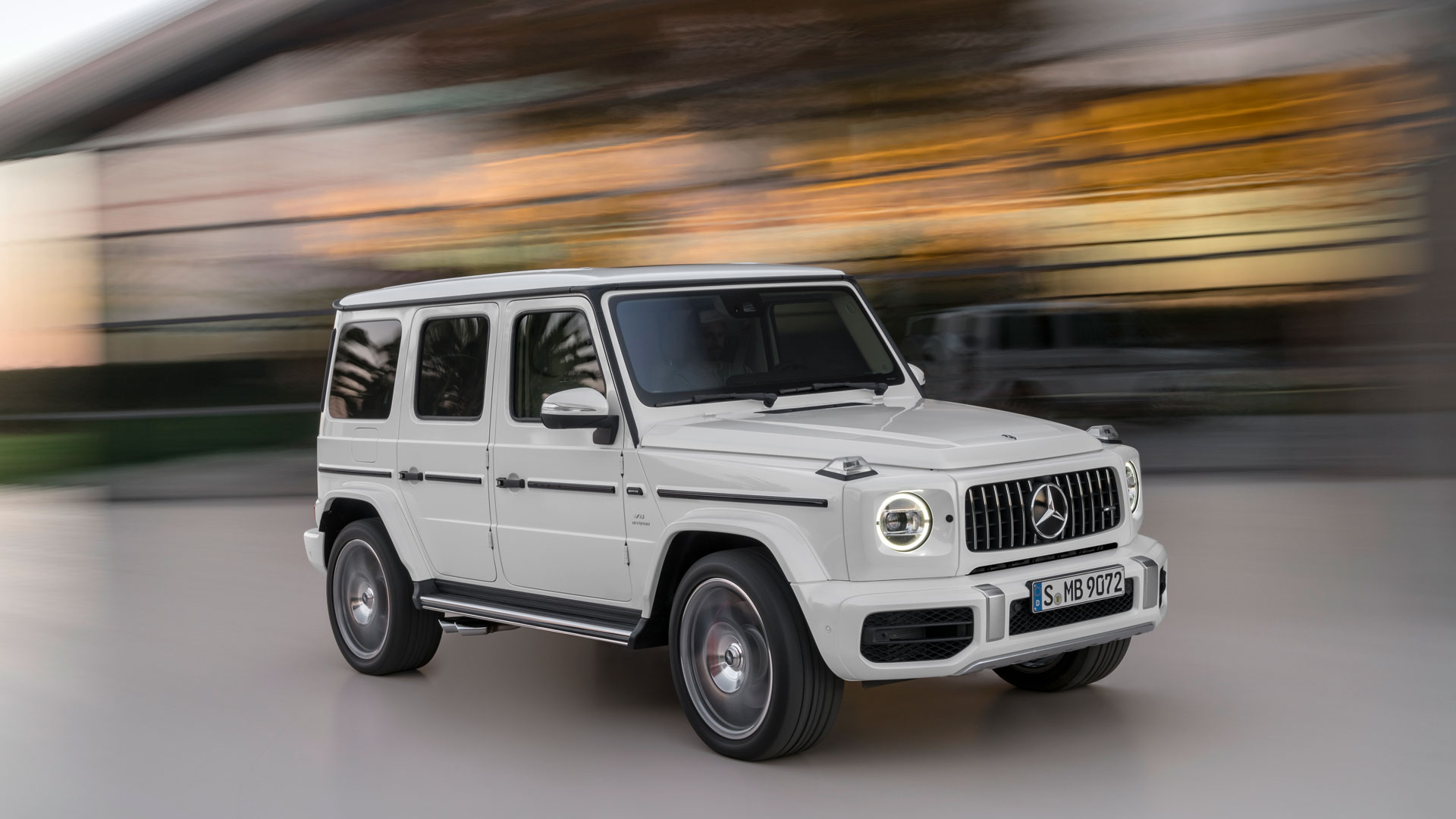
Barely a month after the launch of the ‘standard’ model, Mercedes-AMG unveiled a go-faster version. Power is sourced from a 4.0-litre V8 twin-turbo engine, with the ‘OMG’ G-Class treated to the likes of AMG’s ride control suspension, new driving modes and a nine-speed transmission. It all feels a long way from the 1979 original, but here’s to many more years of G-Wagen excellence.



[…] Yet it also hosts a further 1,500 other exhibits, with 33 focussed on the special accessories that have made a mark on automotive culture. […]
[…] British-based Arcade Cars has revealed the Sojourn: a modernised take on the long-lived German 4×4. […]
[…] company has supplied vehicles to the Vatican for 94 years – and has offered Popemobiles based on the G-Class SUV (formerly G-Wagen) for no less than 45 […]